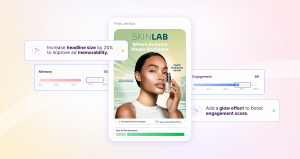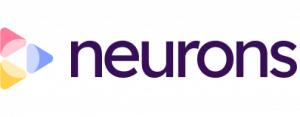Neurons expands its AI-driven advertising prediction platform with two groundbreaking marketing metrics.
For the first time, we can predict whether people will remember an ad without having to wait for test results or relying on follow-up questions. It's a marketing metric straight out of the future.”
COPENHAGEN, DENMARK, January 15, 2025 /EINPresswire.com/ -- Neurons, a leader in AI-driven marketing insights, is introducing Memory and Engagement, two groundbreaking metrics now available on its advertising prediction platform. Already widely used for its accuracy in predicting attention, the platform now also provides insights into ad recall and engagement, empowering marketers to make better decisions, faster. The platform helps marketers understand how well their image and video ads perform and when ads fall short of industry benchmarks, it gives actionable recommendations for improvement. All this without the need to go live with ads or spend on advertising to the market.— Dr. Thomas Zoëga Ramsøy, CEO & Chief AI Officer of Neurons
Powered by proprietary neuroscience data and with 10+ unique AI models collaborating, the Neurons platform analyzes ads at top speed. Marketers can simply upload their advertising assets to the platform and get easy-to-understand feedback on what’s effective and what needs adjustment. The platform predicts key performance metrics, including attention, engagement, and ad memorability, while providing suggestions on how to make ads more appealing, branding more visible, key messages more memorable, and much more. AI-ready marketers across the globe use these insights to fine-tune their campaigns with confidence, saving time and resources while driving measurable results with the tool.
Neurons AI is taught on one of the world’s largest proprietary neuroscience and eye-tracking databases. Its scientifically validated predictive AI models measure specific human behaviors with unmatched precision. For example, its attention AI model generates heatmaps with over 97% accuracy, and reveals performance gaps within seconds for image ads and minutes for video content. All predictions and recommendations are interpreted by some of the most advanced large language models (LLMs) available today.
The addition of the Memory and new Engagement metrics further expands the platform’s capabilities including its AI insights and recommendation engine:
* The Neurons Memory score predicts how likely an ad is to be remembered after a brief glance. Unlike traditional metrics, it incorporates the implicit component of recall time, providing more reliable insights into what truly sticks with the audience.
* The Neurons Engagement score captures the emotional appeal of an ad. It’s designed to predict the level of positive emotional response an ad would evoke in its audience after a short exposure. Built on Neurons’ fast-response tests, this score captures gut-level reactions, helping marketers assess what truly connects with people.
“Neurons Memory feels like a marketing metric straight out of the future,” said Dr. Thomas Zoëga Ramsøy, CEO & Chief AI Officer of Neurons. “For the first time, we can predict whether people will remember an ad without having to wait for test results or relying on follow-up questions. We can now measure memory second by second and pinpoint exactly which parts of an ad are the most memorable. This means that we’re going beyond what neuroscience has been able to do for marketers. With the new Memory score, marketers can now measure all 4 elements of successful ads with Neurons AI, now capturing Attention, Engagement, Cognitive Demand (complexity), and Memory.”
Andreas Obel
Neurons Inc
+45 42 61 98 06
marketing@neuronsinc.com
Visit us on social media:
LinkedIn
YouTube
Instagram
Facebook
Legal Disclaimer:
EIN Presswire provides this news content "as is" without warranty of any kind. We do not accept any responsibility or liability for the accuracy, content, images, videos, licenses, completeness, legality, or reliability of the information contained in this article. If you have any complaints or copyright issues related to this article, kindly contact the author above.



